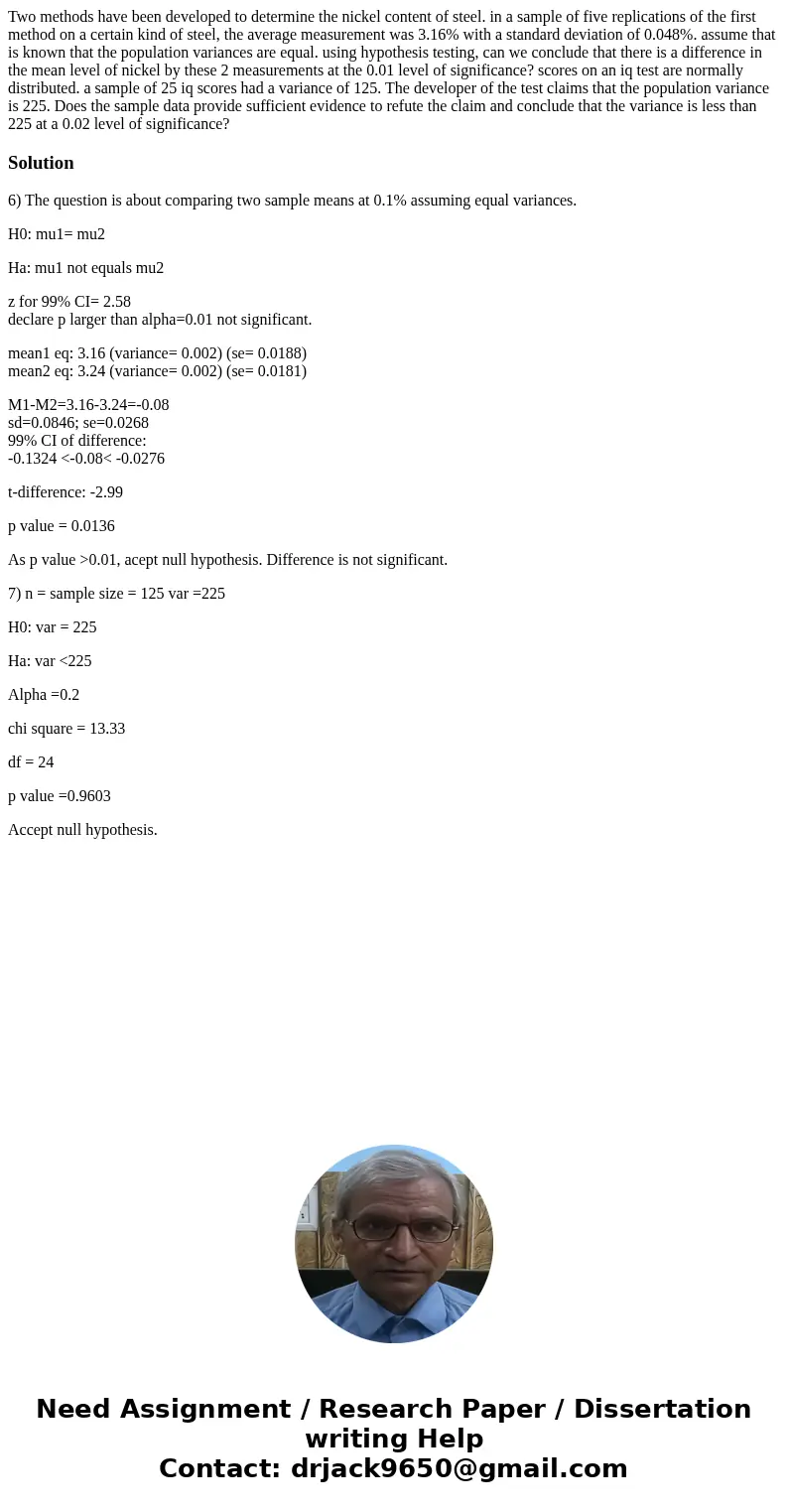Two methods have been developed to determine the nickel cont
Two methods have been developed to determine the nickel content of steel. in a sample of five replications of the first method on a certain kind of steel, the average measurement was 3.16% with a standard deviation of 0.048%. assume that is known that the population variances are equal. using hypothesis testing, can we conclude that there is a difference in the mean level of nickel by these 2 measurements at the 0.01 level of significance? scores on an iq test are normally distributed. a sample of 25 iq scores had a variance of 125. The developer of the test claims that the population variance is 225. Does the sample data provide sufficient evidence to refute the claim and conclude that the variance is less than 225 at a 0.02 level of significance?
Solution
6) The question is about comparing two sample means at 0.1% assuming equal variances.
H0: mu1= mu2
Ha: mu1 not equals mu2
z for 99% CI= 2.58
declare p larger than alpha=0.01 not significant.
mean1 eq: 3.16 (variance= 0.002) (se= 0.0188)
mean2 eq: 3.24 (variance= 0.002) (se= 0.0181)
M1-M2=3.16-3.24=-0.08
sd=0.0846; se=0.0268
99% CI of difference:
-0.1324 <-0.08< -0.0276
t-difference: -2.99
p value = 0.0136
As p value >0.01, acept null hypothesis. Difference is not significant.
7) n = sample size = 125 var =225
H0: var = 225
Ha: var <225
Alpha =0.2
chi square = 13.33
df = 24
p value =0.9603
Accept null hypothesis.

 Homework Sourse
Homework Sourse